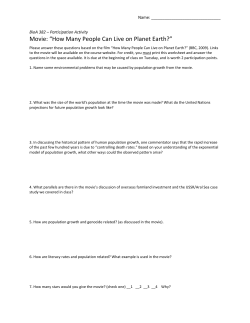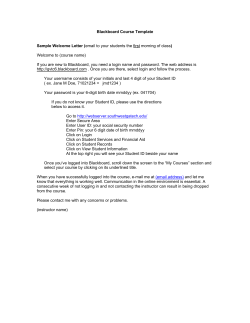
Windows Movie Maker: Capturing Video Using a Video Conversion Device... VHS Tapes, DVD Videos or Analog Camcorders
Windows Movie Maker: Capturing Video Using a Video Conversion Device for VHS Tapes, DVD Videos or Analog Camcorders Importing is not an option for some video formats as there is not a file to import. Therefore, a video conversion device must be used to capture the video in order to create a file for a person to work with. Capture devices can be checked out from the technology department via the help desk. Please put a request in the help desk for a capture device and also please put in the name of the computer you desire the capture device installed on. Please note that the capture device will be installed on one computer of your choice. Please also provide the time frame you will need the capture device for so it may be reserved for the entirety of your use. Attach the capture device by hooking up the colored AV cables to the matching color slot on the VHS/DVD player or the analog camcorder. Then attach the other end of the colored AV cables to the matching color slots on the capture device. Hook the USB cable to the computer and open Windows Movie Maker. Please note that a member of the technology department must install the driver for the capture device before you can utilize it. Once in Movie Maker click the capture from a video device link. If you cannot see the capture from video device link, click the drop down arrow next to the capture video menu to expand the selections. Select the capture device you have connected and change the audio device to USB2.0, using the dropdown arrow, and change the input source to composite, using the dropdown arrow. Then click the next button. April 2009 Rev. 2 BL 1 WindowsMovieMakerCaptureDevice.doc Enter an appropriate title for the captured video segment and save the file to an appropriate location. To change the saving location click the browse button and navigate to the location the file should be saved to. It is recommended to save the file to a C: drive location, like the desktop, and then copy it to a network location once the capture is completed. Once you have named the captured segment and have chosen a save location, click the next button. It is recommended to set the radio button to best quality unless you are using the end project for web integration or something similar. Contact the Help Desk if you need assistance deciding the appropriate setting. Please keep in mind that the better the captured video quality, the larger the file size. If you are capturing hours of video, you will not be able to fit the large files in your network space. Once you have selected your quality setting, click the next button. April 2009 Rev. 2 BL 2 WindowsMovieMakerCaptureDevice.doc Insert the media into the VHS/DVD player and fast-forward the movie to the area you want to begin your capture. Once you have the video in the correct location, click the start capture button. You will see the video playing in the preview window. Once you have captured the desired segment, click the stop capture button. You may start and stop capture as many times as you desire. Please note that stopping the capture will not create a different clip in Movie Maker, but will continue to add to the main captured video segment. All video captured will become one clip that the user must splice later if desired. Once you have captured all video segments needed, click the finish button. You can see the amount of video captured in both seconds and in file size. Once you click finish the video segment will appear in your collections. To view all your captured videos, click the collections icon on the top of the screen. April 2009 Rev. 2 BL 3 WindowsMovieMakerCaptureDevice.doc You have a few options for getting multiple movie clips imported. Option one: use the start and stop capture buttons to capture all the desired clips in one large video file. Begin playing the imported video clip by clicking on the clip and then clicking the play button on the preview window. Once the video reaches a point that should be another video segment, click the split into two clips icon and the video will be split at the point you click the button. Following this method, you will end up with multiple clips in one collection. Option two: go through the whole capture process for every segment you desire. For example: I have a video of a Spring concert, a classroom play and students reading a poem. I need small portions of the Spring concert and the students reading a poem. I will get the tape to the portion of the Spring concert I need and use the stop capture and finish buttons. Then I will fast forward the tape to the students reading a poem and start a new capture. Following this option, you will end up with multiple videos in the collections area. April 2009 Rev. 2 BL 4 WindowsMovieMakerCaptureDevice.doc
© Copyright 2025





















